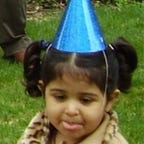Ancient Ink Pens — Foundations of the Beautiful Art of Calligraphy
Ever since the early humans started speaking, they tried to find creative ways to express their words and make their thoughts visible - through writing. Over the years, people used many tools such as fruit juice for ink, cave walls for a writing space, and their hands or wood as writing utensils, establishing new and creative styles of typography.
Eventually, papyrus was used in ancient Egypt to make crisp, long sheets in which they could keep works of art, from paintings of gods, to carvings displaying ancient tales on obelisks and the walls of temples. Ancient Egyptians created ink by grinding minerals of different colors, mixed it with water, to create a paste used to make elaborate designs with bold colors.
This style and revolutionary work spread to China, where the wooden calligraphy pens originated. Originally, animal bones and tortoise shells were carved on using chisels, but then brush strokes were then used for a new from of writing. Using horse hair, these brushes were made to create intricate scripts, creating a contrast of thick and thin lines using different means of depth and angles.
Later on, quill feathers were used in Europe to make thin lines, to preserve space on paper by fitting more words and letters. However, these feathers required dipping the pen numerous times in an ink pot, making them inefficient. In Germany the first metal dip pens were made in 1842. They became popular and in demand as they were cheap and easily produced and became affordable to those that before that could not afford writing tools. This helped the development of education and literacy. Although these pens are not used in day to day life, many artists continue to use these tools and express their writing through this style, to make elaborate and exquisite, and captivating words and letters.
